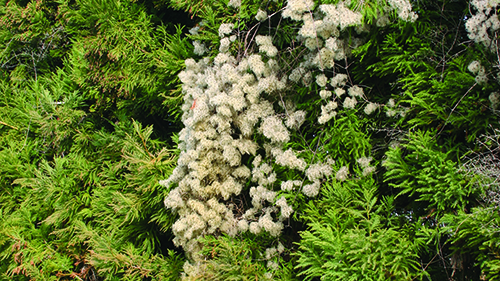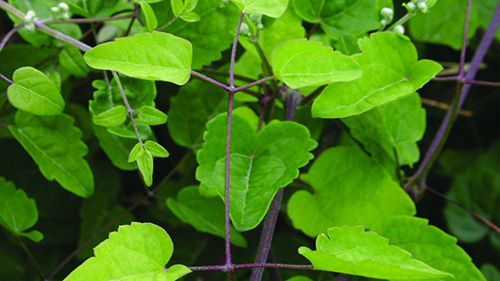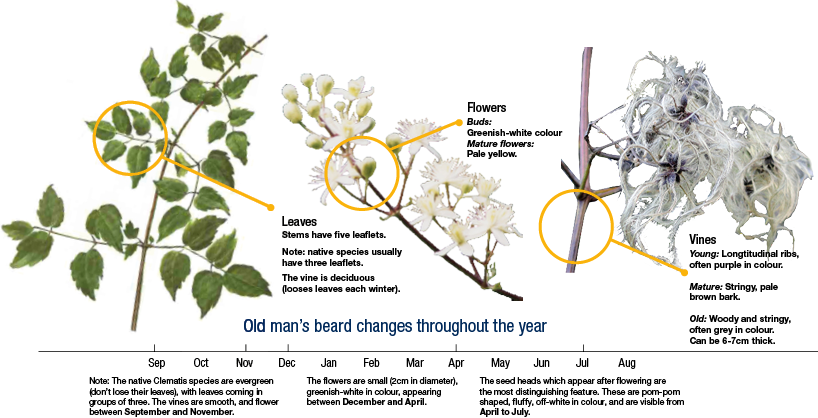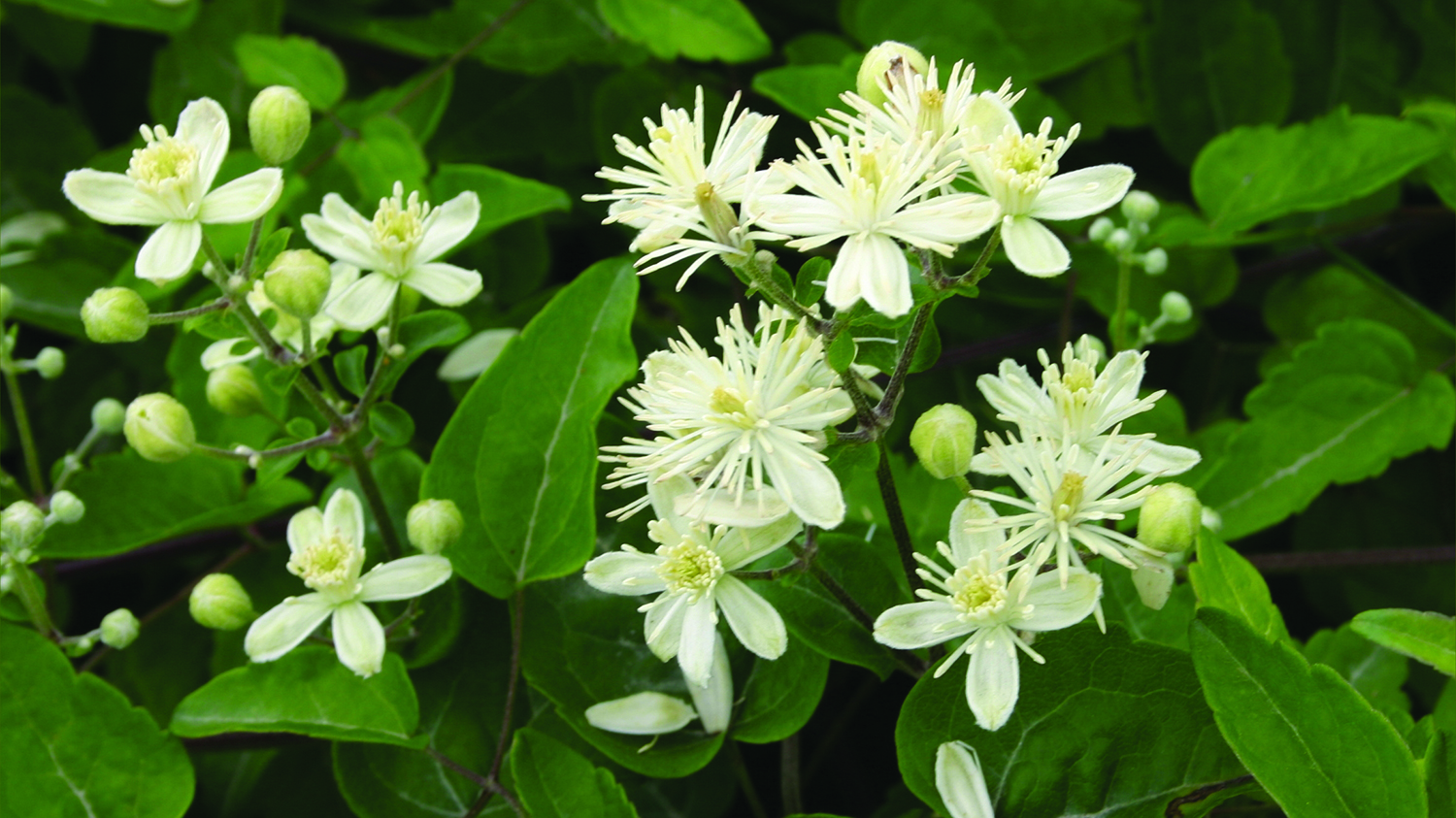| Management programme |
| Progressive containment |
| Objectives |
| Reduce the amount of old man’s beard and limit the locations that have it within the Waikato region, including in wetlands. |
| Impacts |
| Economic, biodiversity, social and cultural wellbeing, amenity/recreation |
Old man’s beard is generally recognised as the most damaging introduced climbing plant in New Zealand. One plant can blanket an area up to 180 square metres. A native of Europe, old man’s beard was introduced as an ornamental plant. Since then, its spread in the Waikato has been recorded across the region, mainly in the King Country, Taupō and Hamilton.


What does it look like?
Old man’s beard is a deciduous, layering climbing vine with long ribbed, woody stems. It can be mistaken for native clematis species, however the identifying characteristics described below will help you to distinguish them.
Old man’s beard
Flowers
- Small (2cm-3cm in diameter) four-petalled flower, creamy white and sweet scented.
- Produced in summer to Autumn (December to May).
Fruit/seeds
- Seeds are grey and hairy (2mm-3mm long) with distinct white plumes (3cm-4cm long).
- Produced in dense, fluffy clusters (seed heads) in autumn, that persist on the plant over winter (hence the name old man’s beard).
Leaves
- Opposite leaves comprised of five (rarely three) widely spaced leaflets.
- Leaflets have a dull green surface, are thin and papery, and sparsely hairy.
- Leaves are lost in autumn/winter.
Stems
- Woody stems have six prominent ribs (appear as furrows on older vines).
- Stem bark is pale and easy to rub off.

Image source: Otago Regional Council
Native clematis (e.g. Clematis foetida, C. forsteri, C. paniculata)
Flowers
- Most native species flower from spring to early summer (September to November).
- Flowers usually five or six petalled (depending on species).
Fruit/seeds
- This varies between native clematis species, but many are similar to old man’s beard,
Leaves
- Leaves usually have groups of three leaflets, but occasionally six or nine (e.g. in juvenile Clematis foetida).
- Leaflets generally thicker than those in old man’s beard, and darker often glossy green.
Why is it a pest?
Old man’s beard is an extremely vigorous climber. It can blanket desirable trees and shrubs and the vegetation in between, blocking out light, preventing regeneration and eventually strangling the supporting plants. It is a particular problem in secondary or modified primary forests, but can also infest roadsides, hedgerows, disturbed sites, and wetlands. It is tolerant of cold, moderate shade, damp, salt, and most soil types.
New infestations can come from dumped garden waste, and from the long-lived seeds that can spread widely via wind and water. New plants can also grow from sections of stem that can reroot when they touch the ground.
Control methods
If you see old man’s beard on your property, please report it to our pest plant staff, and we will work with you to control it. Call 0800 800 401 to report it to your local biosecurity pest plant officer.
More information
Publications
The following publications are available for download or from Waikato Regional Council. Contact us to request a copy (freephone 0800 800 401).






To ask for help or report a problem, contact us
Tell us how we can improve the information on this page. (optional)